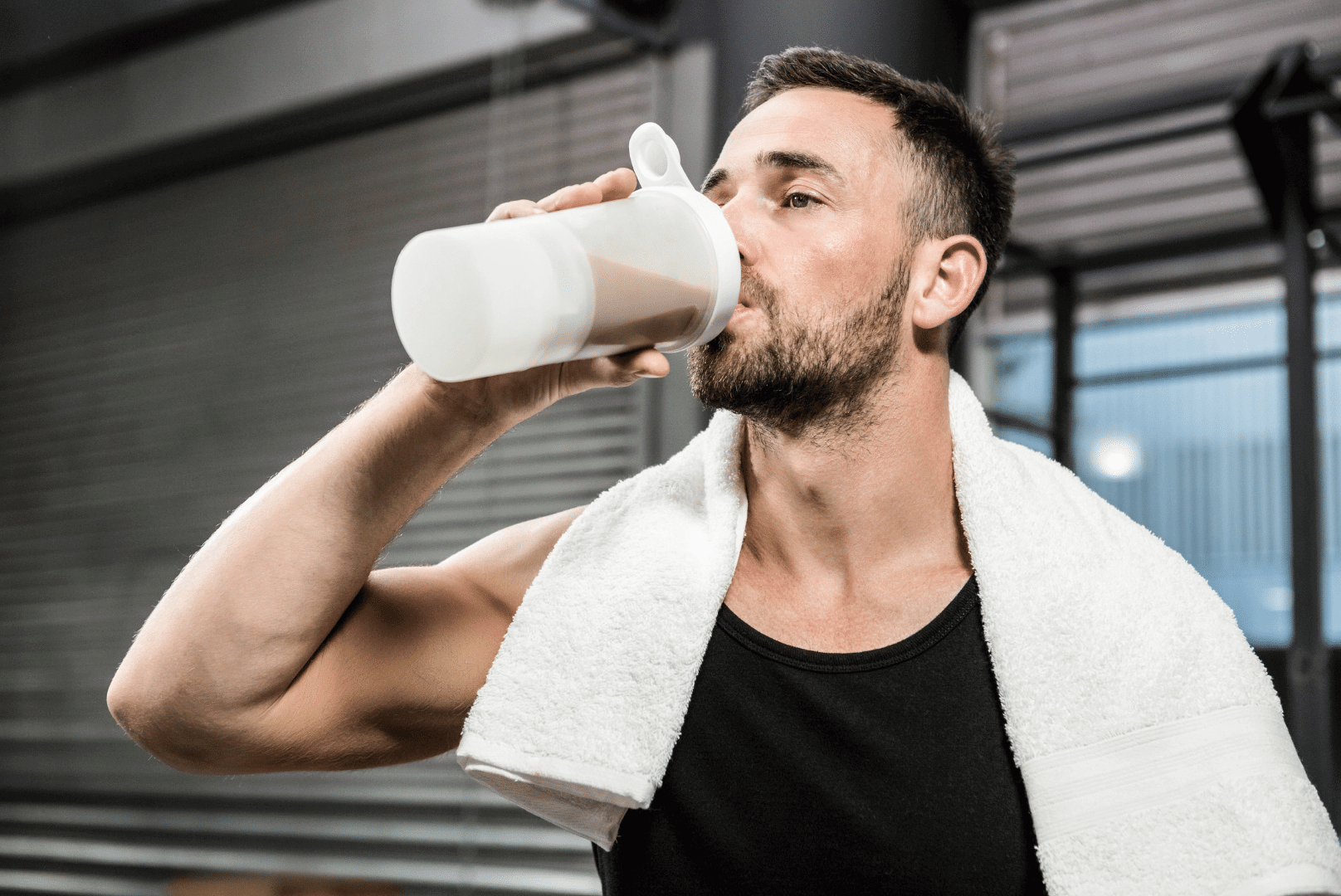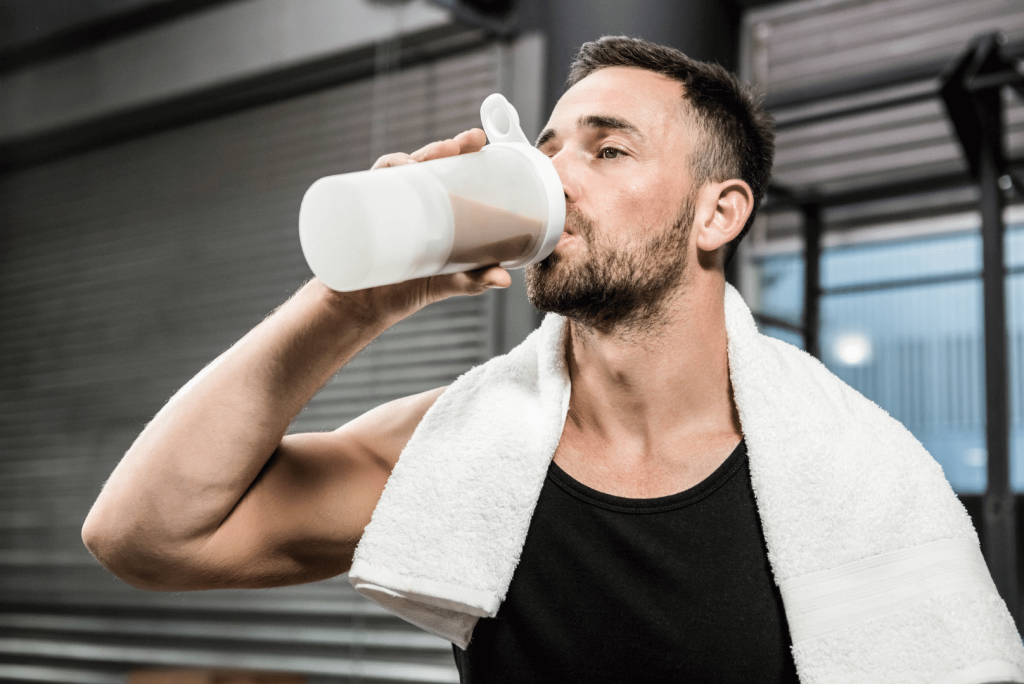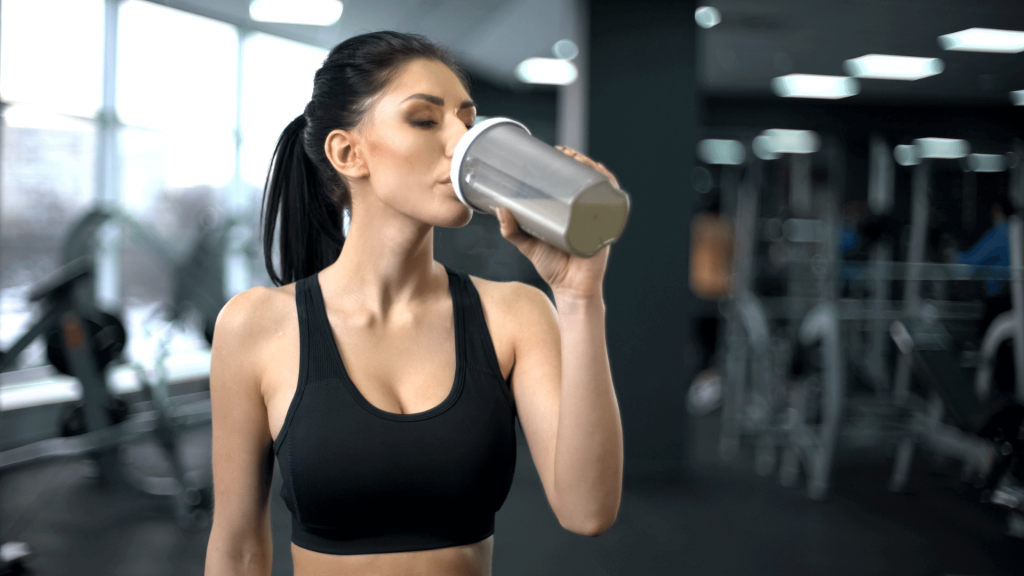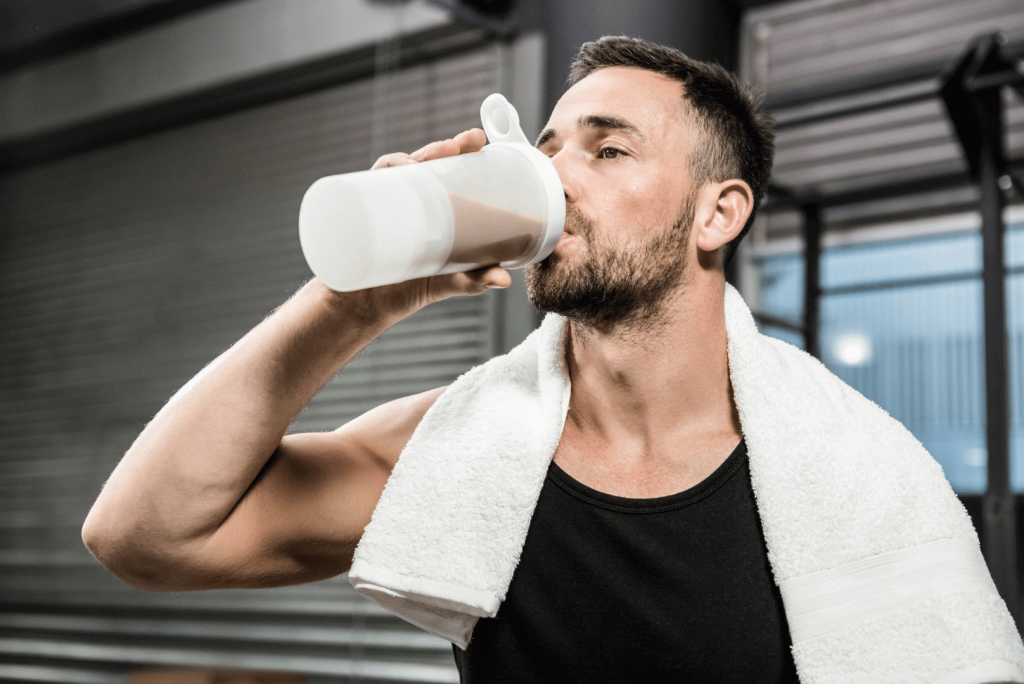
Part 1: Protein Shakes for Weight Loss: Science, Timing, and Comparisons


Part 1: Protein Shakes for Weight Loss: Science, Timing, and Comparisons
Protein Shakes for Weight Loss
Losing weight requires a “calorie deficit,” meaning you burn more calories than you eat. But, protein foods, especially protein shakes, can be a helpful tool for many reasons:
- Keeping you full for longer by influencing hormones that regulate hunger and fullness, including peptide YY and glucagon-like peptide-1 (GLP). Protein can also suppress neuropeptide Y (a brain hormone), which increases appetite and food intake.
- Protein digestion requires energy: Protein has a higher thermic effect of food (TEF) compared to carbohydrates and fats. Your body expends more energy digesting and processing proteins compared to other macronutrients.
- Stabilizing blood sugar: High protein foods help to keep blood sugar levels steady by slowing down their absorption into the bloodstream. This can help prevent spikes and dips in blood sugar, which can cause increased hunger and cravings.
- Preserving muscle: When you are trying to lose weight by cutting calories, your body looks for other energy sources – including breaking down muscle. Ensuring you get enough protein while losing weight can mitigate some of this muscle loss.
You can reap these benefits from any protein food. However, since protein powders tend to be more portable, non-perishable, and versatile, they’re a great tool if you’re busy or always on the go.

When to Drink Protein Shakes for Weight Loss
Protein shakes are a helpful weight loss tool, and can be used in many ways when trying to lose weight, for example:
- Snack or meal replacement: If you find yourself reaching for unhealthy snacks between meals, having a protein shake as a snack is a good choice. It’s generally satiating, which helps to keep calorie intake in check. Replacing a meal with a shake can reduce overall calorie intake while keeping you full, and still getting important nutrients.
- Before exercise: Protein shakes can help increase muscle protein synthesis and provide the energy needed to power through a workout.
- Post-exercise: Have a shake to help with muscle recovery and growth, and preserve lean muscle mass. This is important for keeping your metabolism healthy and helps control calorie intake later in the day.
Breakfast is important for weight loss
Most people do not get enough protein for breakfast. While it might be easy to reach for a bagel or pastry, these foods spike blood sugar levels and skew hunger levels. Morning protein can help by providing a slower release of energy and making you less likely to reach for unhealthy food choices later in the day.
Eating breakfast contributes to weight loss in a few ways:
- Supports healthy metabolism
- Controls hunger and overeating
- Provides energy and focus
- Supports healthy food choices later in the day
Breakfast quality matters. It should contain protein, healthy fats, and high-fiber carbohydrates. Protein shakes can be helpful for getting all of these in, especially in a smoothie with vegetables, berries, and fiber sources like flax or chia seeds. Breakfast protein is helpful for many reasons:
- Satiety: Protein is known to be more filling than carbohydrates and fats, which is helpful first thing in the morning. This can prevent you from over-eating later in the day.
- Reducing calorie intake: Many protein shakes are formulated to be low-calorie, while still providing a good amount of protein. Many of them also contain important vitamins and minerals, which can help ensure you are getting proper nutrition.
- Muscle mass preservation: Calorie deficits can help you burn extra fat, but can also cause muscle loss. This can have consequences on your metabolism. To prevent this, it is important to meet protein requirements even when eating less.
- Convenience and portion control: Protein shakes are quick and easy to prepare, which can be helpful for busy mornings. They also have set portions, which can prevent overeating.
Drink protein shakes when you’re hungry between meals

Effective hunger management is important for weight loss. Enjoying protein shakes as snacks can help manage hunger and meet protein needs when in a calorie deficit. They make good snack choices because they are convenient and portable, ensuring you have a healthy option when on the go. This can minimize impulsive or unhealthy food choices throughout the day.
How to choose a protein shake for weight loss
It is important to choose high-quality protein powders with minimal added sugars and unnecessary additives. When choosing a protein product for weight loss, consider:
- Protein content: Look for products with a high protein content. Aim for at least 20 grams of protein per serving.
- Calorie content: Look for products relatively low in calories. Since you need a calorie deficit for weight loss, choosing a product with fewer calories per serving can help control overall calorie intake. A good range is 100-150 calories per serving.
- Macronutrient balance: Aim for products high in protein relative to the number of carbohydrates and fats they include. Most protein powders are formulated specifically to have less fat and carbohydrates.
- Ingredients: Read the ingredient list carefully. Try to avoid products with added sugars, artificial sweeteners, or unhealthy additives. Some people find that dairy-derived protein sources can cause inflammatory symptoms, such as gas or acne. Inflammation may make it more difficult to lose weight.
- Taste and texture: Finding a taste and texture you enjoy is important! Otherwise, you may feel less inclined to actually consume the product. Experiment with different flavors or brands to find one that you enjoy, which can make it easier for you to incorporate into your lifestyle.
- Quality and safety: Choose products from reputable brands that undergo third-party testing for both quality and safety.
Plant-based vs whey and casein for weight loss
Plant-based protein products are made from various plants such as pea, soy, or brown rice. Depending on the brand, multiple plant sources can be combined, or include just one.
Whey and casein proteins are derived from dairy and are byproducts of cheese production. Whey is the liquid portion left when casein curdles during the process. Both are often used in protein powders.
Some key differences between these three proteins include:
- Digestion and absorption
Whey is a complete protein, and has all the essential amino acids your body needs. It is rapidly digested which can quickly release amino acids into the bloodstream. Dairy proteins are high in insulinogenic amino acids like leucine and isoleucine. Because of its fast digestion and amino acid component, whey may spike insulin. This insulin spike can be good for muscle gain, but it can also cause a fast drop in blood sugar and subsequently increase hunger in some people.
Casein is also a complete protein. It digests more slowly compared to whey so it can be a better option for managing hunger. However, for some, it can be inflammatory, especially for those with dairy sensitivity.
Plant-based proteins can have incomplete proteins, but most good brands blend sources to ensure they are complete. They have different rates of digestion or absorption depending on their ingredients. However, because most of them have lots of fiber and are slower to digest than whey, plant proteins don’t tend to spike insulin and drop blood sugar.

- Potential inflammation and digestive issues
Because whey and casein are derived from milk, they contain lactose and dairy proteins. If you have a lactose intolerance, or any allergy or sensitivity to dairy, plant-based proteins are a healthier and safer option.
- Nutrient profiles
Plant-based products often contain fiber, antioxidants, and phytochemicals which are all naturally found in plant sources. Whey and casein products tend to have a higher amount of branched-chain amino acids (particularly leucine), which can have a beneficial effect on muscle protein synthesis.
- Taste and texture
Most plant-based proteins taste awful and have a gritty texture, so formulators often need to include food texturizers to improve taste and mouthfeel. Many of these food texturizers can cause leaky gut and inflammation, even though the government generally recognizes them as safe.. Whereas, whey and casein protein naturally taste better and have a smoother texture. This is why it took us 15 years to formulate our current Protein Breakthrough to taste great with all-natural ingredients since it’s our core value to use only safe and high-quality ingredients.
When it comes to weight loss, you need to be in a caloric deficit. Generally, eating more protein, whether from food or protein shakes, can help you better manage hunger and eat less overall.
Read this article to learn more about how much protein to eat daily if you’re trying to lose weight.
Key Takeaways
Protein is extremely important when trying to lose weight. By getting enough, you will maintain your muscle mass, curb your hunger, and keep calories in check.
Protein Breakthrough is a high-protein, plant-based product that delivers 23 grams of protein per serving. It is rich in fiber that helps you to stay fuller for longer and aids in maintaining lean muscle mass. All while keeping calories to a minimum.
References
- Belza A, Ritz C, Sørensen MQ, Holst JJ, Rehfeld JF, Astrup A. Contribution of gastroenteropancreatic appetite hormones to protein-induced satiety. Am J Clin Nutr. 2013;97(5):980-989. doi:10.3945/ajcn.112.047563
- Lin S, Boey D, Herzog H. NPY and Y receptors: lessons from transgenic and knockout models. Neuropeptides. 2004;38(4):189-200. doi:10.1016/j.npep.2004.05.005
- Veldhorst M, Smeets A, Soenen S, et al. Protein-induced satiety: effects and mechanisms of different proteins. Physiol Behav. 2008;94(2):300-307. doi:10.1016/j.physbeh.2008.01.003
- Gannon MC, Nuttall FQ, Saeed A, Jordan K, Hoover H. An increase in dietary protein improves the blood glucose response in persons with type 2 diabetes. Am J Clin Nutr. 2003;78(4):734-741. doi:10.1093/ajcn/78.4.734
- Franz MJ. Protein: metabolism and effect on blood glucose levels. Diabetes Educ. 1997;23(6):643-646, 648, 650-651. doi:10.1177/014572179702300603
- Mettler S, Mitchell N, Tipton KD. Increased protein intake reduces lean body mass loss during weight loss in athletes. Med Sci Sports Exerc. 2010;42(2):326-337. doi:10.1249/MSS.0b013e3181b2ef8e
- Helms ER, Aragon AA, Fitschen PJ. Evidence-based recommendations for natural bodybuilding contest preparation: nutrition and supplementation. J Int Soc Sports Nutr. 2014;11(1):20. doi:10.1186/1550-2783-11-20
- Binou P, Yanni AE, Kartsioti K, et al. Wheat biscuits enriched with plant-based protein contribute to weight loss and beneficial metabolic effects in subjects with overweight/obesity. Nutrients. 2022;14(12):2516. doi:10.3390/nu14122516
- Bowen J, Brindal E, James-Martin G, Noakes M. Randomized trial of a high protein, partial meal replacement program with or without alternate day fasting: Similar effects on weight loss, retention status, nutritional, metabolic, and behavioral outcomes. Nutrients. 2018;10(9):1145. doi:10.3390/nu10091145
- Gieske BT, Stecker RA, Smith CR, et al. Metabolic impact of protein feeding prior to moderate-intensity treadmill exercise in a fasted state: a pilot study. J Int Soc Sports Nutr. 2018;15(1):56. doi:10.1186/s12970-018-0263-6
- Monteyne A, Martin A, Jackson L, et al. Whey protein consumption after resistance exercise reduces energy intake at a post-exercise meal. Eur J Nutr. 2018;57(2):585-592. doi:10.1007/s00394-016-1344-4
- Xiao K, Furutani A, Sasaki H, Takahashi M, Shibata S. Effect of a high protein diet at breakfast on postprandial glucose level at dinner time in healthy adults. Nutrients. 2022;15(1):85. doi:10.3390/nu15010085
- Rabinovitz HR, Boaz M, Ganz T, et al. Big breakfast rich in protein and fat improves glycemic control in type 2 diabetics: Big Breakfast and Glycemic Control. Obesity (Silver Spring). 2014;22(5):E46-54. doi:10.1002/oby.20654
- Fleischer JG, Das SK, Bhapkar M, Manoogian ENC, Panda S. Associations between the timing of eating and weight-loss in calorically restricted healthy adults: Findings from the CALERIE study. Exp Gerontol. 2022;165(111837):111837. doi:10.1016/j.exger.2022.111837
- Ogata H, Hatamoto Y, Goto Y, et al. Association between breakfast skipping and postprandial hyperglycaemia after lunch in healthy young individuals. Br J Nutr. 2019;122(4):431-440. doi:10.1017/S0007114519001235
- Ruddick-Collins LC, Morgan PJ, Fyfe CL, et al. Timing of daily calorie loading affects appetite and hunger responses without changes in energy metabolism in healthy subjects with obesity. Cell Metab. 2022;34(10):1472-1485.e6. doi:10.1016/j.cmet.2022.08.001
- Adolphus K, Lawton CL, Dye L. The effects of breakfast on behavior and academic performance in children and adolescents. Front Hum Neurosci. 2013;7:425. doi:10.3389/fnhum.2013.00425
- Baum JI, Gaines BL, Kubas GC, Mitchell CF, Russell SL. Educational nutrition messaging at breakfast reduces snack intake and influences snack preferences in adult men and women. Appetite. 2017;117:67-73. doi:10.1016/j.appet.2017.06.009
- Hertzler SR, Lieblein-Boff JC, Weiler M, Allgeier C. Plant proteins: Assessing their nutritional quality and effects on health and physical function. Nutrients. 2020;12(12):3704. doi:10.3390/nu12123704
- Salehi A, Gunnerud U, Muhammed SJ, et al. The insulinogenic effect of whey protein is partially mediated by a direct effect of amino acids and GIP on β-cells. Nutr Metab (Lond). 2012;9(1):48. doi:10.1186/1743-7075-9-48
- Lerner A, Matthias T. Changes in intestinal tight junction permeability associated with industrial food additives explain the rising incidence of autoimmune disease. Autoimmun Rev. 2015;14(6):479-489. doi:10.1016/j.autrev.2015.01.009
